Bingchen Zhang
Control Copy-Paste: Controllable Diffusion-Based Augmentation Method for Remote Sensing Few-Shot Object Detection
Jul 29, 2025Abstract:Few-shot object detection (FSOD) for optical remote sensing images aims to detect rare objects with only a few annotated bounding boxes. The limited training data makes it difficult to represent the data distribution of realistic remote sensing scenes, which results in the notorious overfitting problem. Current researchers have begun to enhance the diversity of few-shot novel instances by leveraging diffusion models to solve the overfitting problem. However, naively increasing the diversity of objects is insufficient, as surrounding contexts also play a crucial role in object detection, and in cases where the object diversity is sufficient, the detector tends to overfit to monotonous contexts. Accordingly, we propose Control Copy-Paste, a controllable diffusion-based method to enhance the performance of FSOD by leveraging diverse contextual information. Specifically, we seamlessly inject a few-shot novel objects into images with diverse contexts by a conditional diffusion model. We also develop an orientation alignment strategy to mitigate the integration distortion caused by varying aspect ratios of instances. Experiments on the public DIOR dataset demonstrate that our method can improve detection performance by an average of 10.76%.
A Robust Super-resolution Gridless Imaging Framework for UAV-borne SAR Tomography
Feb 02, 2024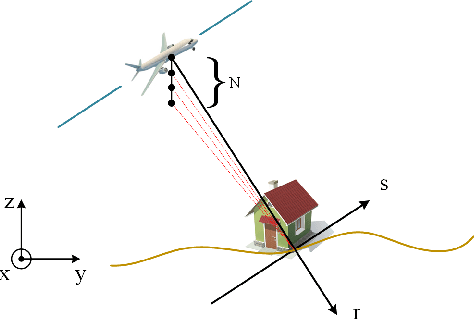
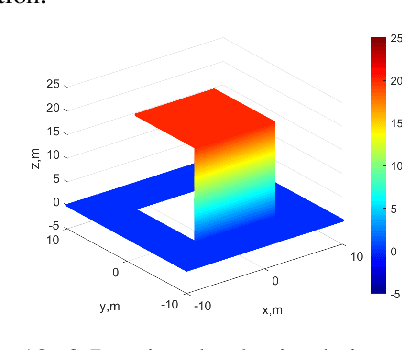
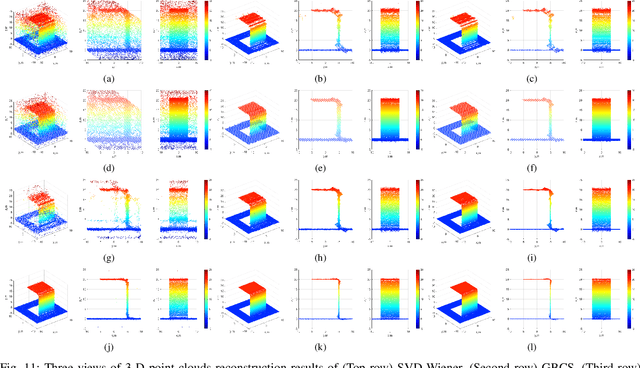
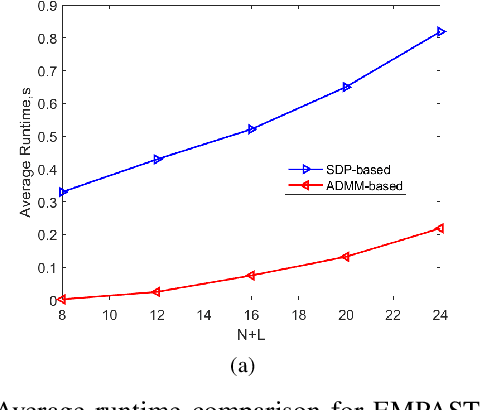
Abstract:Synthetic aperture radar (SAR) tomography (TomoSAR) retrieves three-dimensional (3-D) information from multiple SAR images, effectively addresses the layover problem, and has become pivotal in urban mapping. Unmanned aerial vehicle (UAV) has gained popularity as a TomoSAR platform, offering distinct advantages such as the ability to achieve 3-D imaging in a single flight, cost-effectiveness, rapid deployment, and flexible trajectory planning. The evolution of compressed sensing (CS) has led to the widespread adoption of sparse reconstruction techniques in TomoSAR signal processing, with a focus on $\ell _1$ norm regularization and other grid-based CS methods. However, the discretization of illuminated scene along elevation introduces modeling errors, resulting in reduced reconstruction accuracy, known as the "off-grid" effect. Recent advancements have introduced gridless CS algorithms to mitigate this issue. This paper presents an innovative gridless 3-D imaging framework tailored for UAV-borne TomoSAR. Capitalizing on the pulse repetition frequency (PRF) redundancy inherent in slow UAV platforms, a multiple measurement vectors (MMV) model is constructed to enhance noise immunity without compromising azimuth-range resolution. Given the sparsely placed array elements due to mounting platform constraints, an atomic norm soft thresholding algorithm is proposed for partially observed MMV, offering gridless reconstruction capability and super-resolution. An efficient alternative optimization algorithm is also employed to enhance computational efficiency. Validation of the proposed framework is achieved through computer simulations and flight experiments, affirming its efficacy in UAV-borne TomoSAR applications.
SPHR-SAR-Net: Superpixel High-resolution SAR Imaging Network Based on Nonlocal Total Variation
Apr 10, 2023



Abstract:High-resolution is a key trend in the development of synthetic aperture radar (SAR), which enables the capture of fine details and accurate representation of backscattering properties. However, traditional high-resolution SAR imaging algorithms face several challenges. Firstly, these algorithms tend to focus on local information, neglecting non-local information between different pixel patches. Secondly, speckle is more pronounced and difficult to filter out in high-resolution SAR images. Thirdly, the process of high-resolution SAR imaging generally involves high time and computational complexity, making real-time imaging difficult to achieve. To address these issues, we propose a Superpixel High-Resolution SAR Imaging Network (SPHR-SAR-Net) for rapid despeckling in high-resolution SAR mode. Based on the concept of superpixel techniques, we initially combine non-convex and non-local total variation as compound regularization. This approach more effectively despeckles and manages the relationship between pixels while reducing bias effects caused by convex constraints. Subsequently, we solve the compound regularization model using the Alternating Direction Method of Multipliers (ADMM) algorithm and unfold it into a Deep Unfolded Network (DUN). The network's parameters are adaptively learned in a data-driven manner, and the learned network significantly increases imaging speed. Additionally, the Deep Unfolded Network is compatible with high-resolution imaging modes such as spotlight, staring spotlight, and sliding spotlight. In this paper, we demonstrate the superiority of SPHR-SAR-Net through experiments in both simulated and real SAR scenarios. The results indicate that SPHR-SAR-Net can rapidly perform high-resolution SAR imaging from raw echo data, producing accurate imaging results.
Efficient Gridless DoA Estimation Method of Non-uniform Linear Arrays with Applications in Automotive Radars
Mar 08, 2023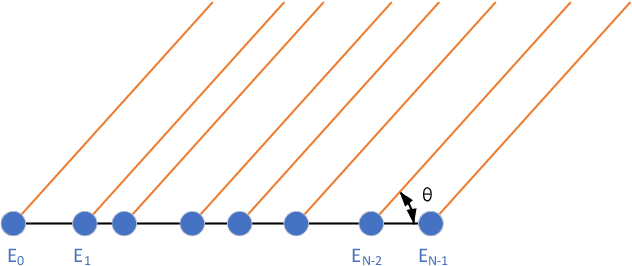
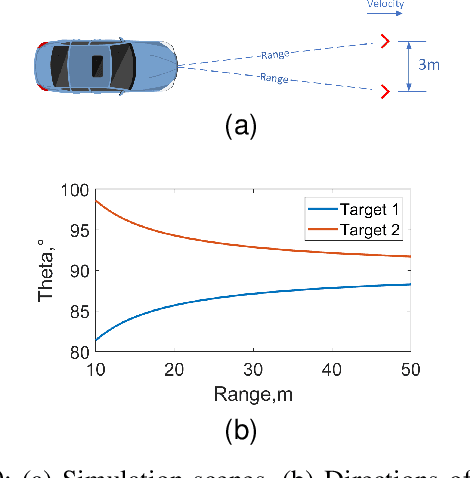
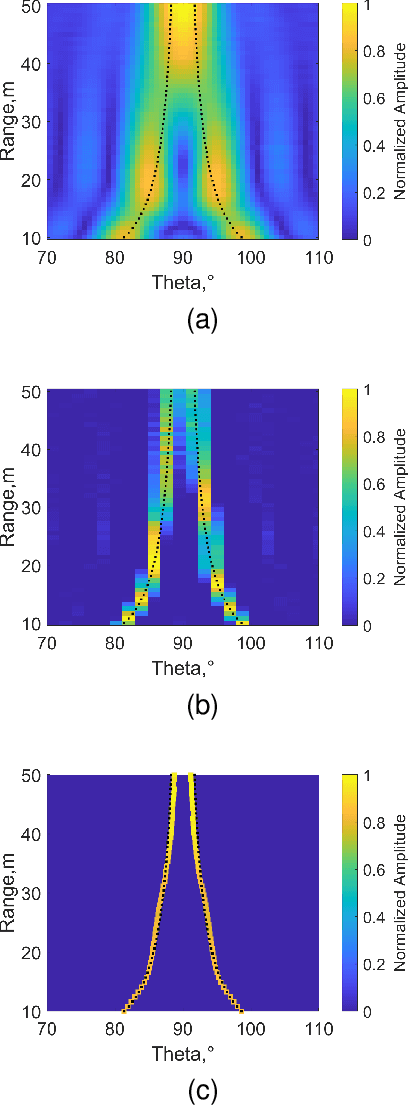
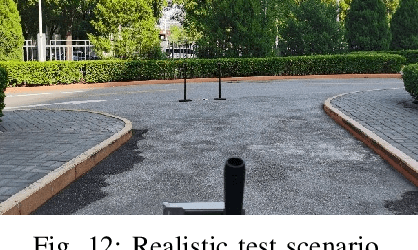
Abstract:This paper focuses on the gridless direction-of-arrival (DoA) estimation for data acquired by non-uniform linear arrays (NLAs) in automotive applications. Atomic norm minimization (ANM) is a promising gridless sparse recovery algorithm under the Toeplitz model and solved by convex relaxation, thus it is only applicable to uniform linear arrays (ULAs) with array manifolds having a Vandermonde structure. In automotive applications, it is essential to apply the gridless DoA estimation to NLAs with arbitrary geometry with efficiency. In this paper, a fast ANM-based gridless DoA estimation algorithm for NLAs is proposed, which employs the array manifold separation technique and the accelerated proximal gradient (APG) technique, making it applicable to NLAs without losing of efficiency. Simulation and measurement experiments on automotive multiple-input multiple-output (MIMO) radars demonstrate the superiority of the proposed method.
A novel TomoSAR imaging method with few observations based on nested array
Dec 01, 2022



Abstract:Synthetic aperture radar tomography (TomoSAR) baseline optimization technique is capable of reducing system complexity and improving the temporal coherence of data, which has become an important research in the field of TomoSAR. In this paper, we propose a nested TomoSAR technique, which introduces the nested array into TomoSAR as the baseline configuration. This technique obtains uniform and continuous difference co-array through nested array to increase the degrees of freedom (DoF) of the system and expands the virtual aperture along the elevation direction. In order to make full use of the difference co-array, covariance matrix of the echo needs to be obtained. Therefore, we propose a TomoSAR sparse reconstruction algorithm based on nested array, which uses adaptive covariance matrix estimation to improve the estimation performance in complex scenes. We demonstrate the effectiveness of the proposed method through simulated and real data experiments. Compared with traditional TomoSAR and coprime TomoSAR, the imaging results of our proposed method have a better anti-noise performance and retain more image information.
Gridless Tomographic SAR Imaging Based on Accelerated Atomic Norm Minimization with Efficiency
Apr 26, 2022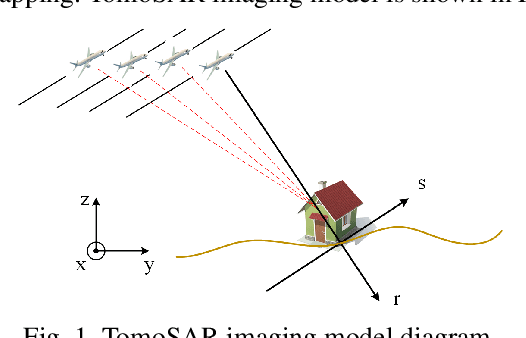
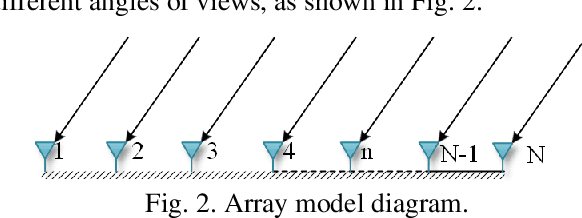
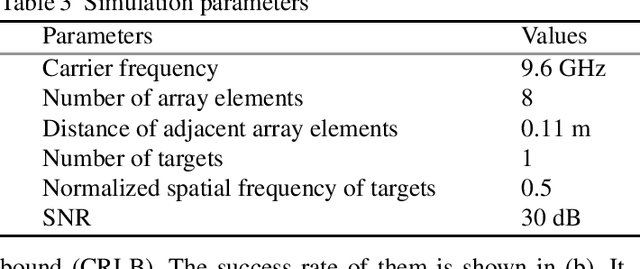
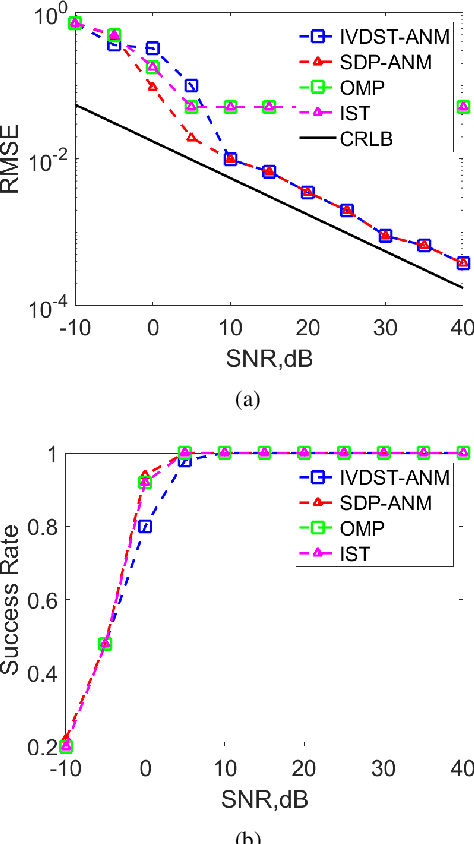
Abstract:Synthetic aperture radar (SAR) tomography (TomoSAR) enables the reconstruction and three-dimensional (3D) localization of targets based on multiple two-dimensional (2D) observations of the same scene. The resolving along the elevation direction can be treated as a line spectrum estimation problem. However, traditional super-resolution spectrum estimation algorithms require multiple snapshots and uncorrelated targets. Meanwhile, as the most popular TomoSAR imaging method in modern years, compressed sensing (CS) based methods suffer from the gridding mismatch effect which markedly degrades the imaging performance. As a gridless CS approach, atomic norm minimization can avoid the gridding effect but requires enormous computing resources. Addressing the above issues, this paper proposes an improved fast ANM algorithm to TomoSAR elevation focusing by introducing the IVDST-ANM algorithm, which reduces the huge computational complexity of the conventional time-consuming semi-positive definite programming (SDP) by the iterative Vandermonde decomposition and shrinkage-thresholding (IVDST) approach, and retains the benefits of ANM in terms of gridless imaging and single snapshot recovery. We conducted experiments using simulated data to evaluate the performance of the proposed method, and reconstruction results of an urban area from the SARMV3D-Imaging 1.0 dataset are also presented.
The First Airborne Experiment of Sparse Microwave Imaging: Prototype System Design and Result Analysis
Oct 20, 2021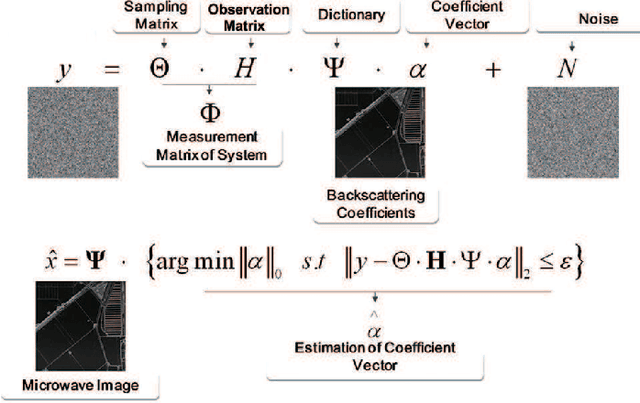
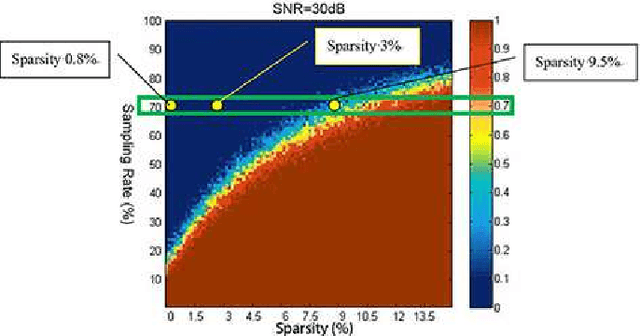
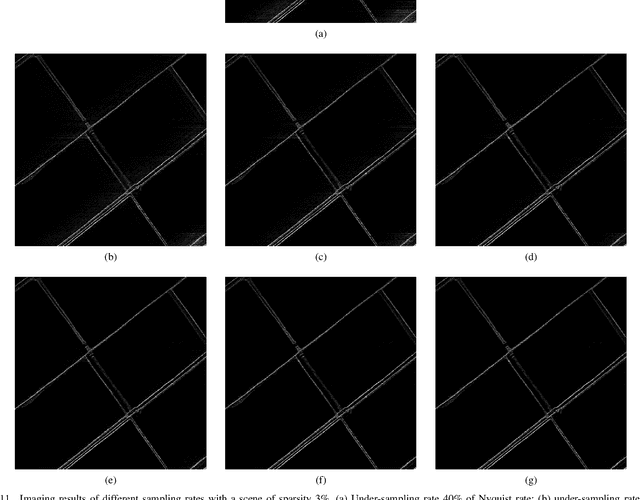
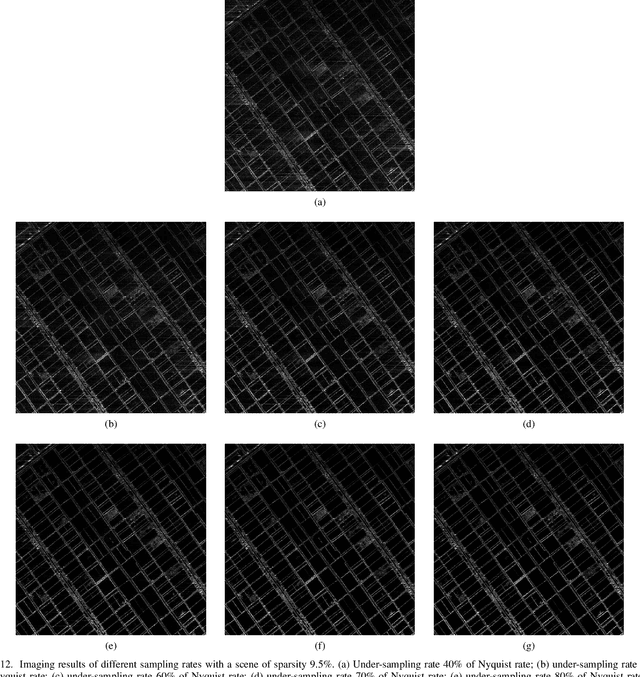
Abstract:In this paper we report the first airborne experiments of sparse microwave imaging, conducted in September 2013 and May 2014, using our prototype sparse microwave imaging radar system. This is the first reported imaging radar system and airborne experiment that specially designed for sparse microwave imaging. Sparse microwave imaging is a novel concept of radar imaging, it is mainly the combination of traditional radar imaging technology and newly developed sparse signal processing theory, achieving benefits in both improving the imaging quality of current microwave imaging systems and designing optimized sparse microwave imaging radar system to reduce system sampling rate towards the sparse target scenes. During recent years, many researchers focus on related topics of sparse microwave imaging, but rarely few paid attention to prototype system design and experiment. We introduce our prototype sparse microwave imaging radar system, including its system design, hardware considerations and signal processing methods. Several design principles should be considered during the system designing, including the sampling scheme, antenna, SNR, waveform, resolution, etc. We select jittered sampling in azimuth and uniform sampling in range to balance the system complexity and performance. The imaging algorithm is accelerated $\ell_q$ regularization algorithm. To test the prototype radar system and verify the effectiveness of sparse microwave imaging framework, airborne experiments are carried out using our prototype system and we achieve the first sparse microwave image successfully. We analyze the imaging performance of prototype sparse microwave radar system with different sparsities, sampling rates, SNRs and sampling schemes, using three-dimensional phase transit diagram as the evaluation tool.
Compressed Sensing SAR Imaging with Multilook Processing
Oct 27, 2013

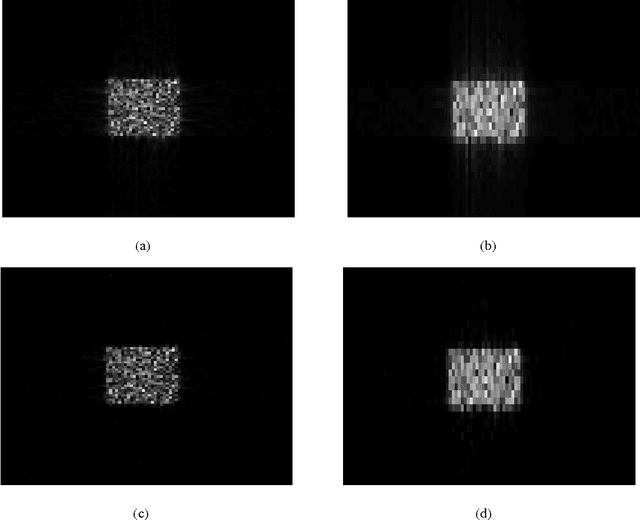

Abstract:Multilook processing is a widely used speckle reduction approach in synthetic aperture radar (SAR) imaging. Conventionally, it is achieved by incoherently summing of some independent low-resolution images formulated from overlapping subbands of the SAR signal. However, in the context of compressive sensing (CS) SAR imaging, where the samples are collected at sub-Nyquist rate, the data spectrum is highly aliased that hinders the direct application of the existing multilook techniques. In this letter, we propose a new CS-SAR imaging method that can realize multilook processing simultaneously during image reconstruction. The main idea is to replace the SAR observation matrix by the inverse of multilook procedures, which is then combined with random sampling matrix to yield a multilook CS-SAR observation model. Then a joint sparse regularization model, considering pixel dependency of subimages, is derived to form multilook images. The suggested SAR imaging method can not only reconstruct sparse scene efficiently below Nyquist rate, but is also able to achieve a comparable reduction of speckles during reconstruction. Simulation results are finally provided to demonstrate the effectiveness of the proposed method.
 Add to Chrome
Add to Chrome Add to Firefox
Add to Firefox Add to Edge
Add to Edge